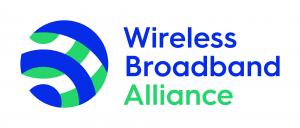
Wireless Broadband Alliance Announces Residential Wi-Fi 7 Field Trial with Unprecedented Results of up to 3.5 Gbps
CableLabs and Intel Collaborate on Groundbreaking Trial, Demonstrating Enhanced Throughput and Network Efficiency
In the initial phase of these trials, CableLabs® and Intel have conducted extensive testing of Wi-Fi 7 in residential environments. The results underscore the transformative impact of Wi-Fi 7, demonstrating substantial performance gains over Wi-Fi 6E, including TCP throughput of up to 3.5 Gbps. The forthcoming Phase 2 will delve deeper into Multi-Link Operation (MLO) and QoS capabilities, further highlighting the advantages of Wi-Fi 7 in home networks.
The Trial and Results
CableLabs and Intel collaborated to assess Wi-Fi 7’s real-world performance in a 4500 sq foot two story residential setting using Wi-Fi 6E and Wi-Fi 7 access points for comparative purposes and supporting client devices. The tests were also carried out on both 5GHz and 6GHz spectrum. The access point was positioned in a corner office on the first floor, with client devices placed at various fixed locations throughout the house. The results demonstrated:
• Enhanced Throughput
- Wi-Fi 7 demonstrated significant throughput gains over Wi-Fi 6E, achieving up to 3.7 Gbps downlink throughput with a 320 MHz channel at close proximity. At typical residential distances, Wi-Fi 7 sustained 2+ Gbps throughput across the same floor as the access point.
• 6 GHz Spectrum Advantages
- The 6 GHz band’s clean spectrum enables better performance and reduced interference, supporting higher data rates and improved reliability.
- Wi-Fi 7 efficiently utilizes available spectrum, ensuring better channel selection and less congestion in high-density environments.
• Expanded Coverage
- Wi-Fi 7 devices provided consistent, reliable coverage throughout. Higher transmit power at 6 GHz and superior signal efficiency resulted in fewer dead zones, particularly beneficial for larger homes.
• Improved Uplink Performance
- Wi-Fi 7 exhibited substantial uplink throughput improvements ensuring better performance for video conferencing, cloud uploads, and IoT applications.
• Readiness for High-Demand Applications
- Wi-Fi 7 is well-suited for bandwidth-heavy and latency-sensitive applications like online gaming, AR/VR, and smart home automation, ensures multi-user connectivity without degradation, making it ideal for modern home environments with numerous active devices.
Tiago Rodrigues, President and CEO at the Wireless Broadband Alliance said, "These results demonstrate that Wi-Fi 7 isn't just an incremental upgrade, it's a giant leap forward for residential connectivity, delivering the seamless reliable experience that modern households are crying out for. The Wi-Fi 7 Field Trials Program builds upon WBA’s foundational report, 'Get Ready for Wi-Fi 7: Applying New Capabilities to Key Use Cases' (https://wballiance.com/get-ready-for-wi-fi-7-applying-new-capabilities-to-the-key-use-cases/), with the trials evaluating and validating the technology’s real-world performance. In collaboration with our members, these trials assess Wi-Fi 7’s key capabilities across diverse deployment scenarios and demonstrate how Wi-Fi 7 can support the next generation of applications and connected experiences."
The Need for Wi-Fi 7 in Residential Networks
92% of U.S. internet households use Wi-Fi as the cornerstone of internet connectivity; with the number of connected devices averaging 20 per home and set to rise and the need to support bandwidth-intensive applications the demands on home Wi-Fi networks have never been higher.
Wi-Fi 7 (IEEE 802.11be), also known as Extremely High Throughput (EHT), introduces key innovations designed to alleviate bottlenecks and limitations. With support for wider 320 MHz channels, improved spectrum efficiency, and advanced traffic management capabilities, Wi-Fi 7 represents the future of home networking.
Lili Hervieu, Principal Architect at CableLabs said, “Our collaborative field trial with WBA and Intel highlights the significant throughput improvements of Wi-Fi 7, driven by the use of a 320 MHz channel in the 6 GHz band. Conducted in a large 4,500-square-foot home, the trial showcased enhanced performance across the entire property, delivering superior downlink and uplink speeds.”
Eric A. McLaughlin, VP & GM Connectivity Solutions Group, Intel Corporation said, “We are thrilled to collaborate with our partners at CableLabs and the WBA and help showcase the real-world benefits of 6 GHz Wi-Fi 7 and 320 MHz channels. At CES’25, Intel launched its third generation of mobile and desktop PC platforms that feature our industry-leading Wi-Fi 7 solutions. The Wi-Fi 7 device ecosystem has significantly expanded by delivering multi-gigabit speeds, low latencies, and improved reliability which enhance entertainment, productivity, and collaboration experiences for a rapidly growing installed base of PC users.”
Download the full report: www.wballiance.com/wi-fi-7-cablelabs-intel
Download Get Ready for Wi-Fi 7: Applying New Capabilities to Key Use Cases (https://wballiance.com/get-ready-for-wi-fi-7-applying-new-capabilities-to-the-key-use-cases/)
About the Wireless Broadband Alliance
Wireless Broadband Alliance (WBA) is the global organization that connects people with the latest Wi-Fi initiatives. Founded in 2003, the vision of the WBA is to drive seamless, interoperable service experiences via Wi-Fi within the global wireless ecosystem. WBA’s mission is to enable collaboration between service providers, technology companies, cities, regulators and organizations to achieve that vision.
WBA undertakes programs and activities to address business and technical challenges, while exploring opportunities for its member companies. These initiatives encompass standards development, industry guidelines, trials, certification, and advocacy. Its key programs include NextGen Wi-Fi, OpenRoaming, 5G, IoT, Smart Cities, Testing & Interoperability and Policy & Regulatory Affairs, with Member-led Work Groups dedicated to resolving standards and technical issues to promote end-to-end services and accelerate business opportunities.
Membership in the WBA includes major operators, service providers, enterprises, hardware and software vendors, and other prominent companies that support the ecosystems from around the world. The WBA Board comprises influential organizations such as Airties, AT&T, Boingo Wireless, Boldyn Networks Broadcom, BT, Charter Communications, Cisco Systems, Comcast, HFCL, Intel, Reliance Jio, Telecom Deutschland and Turk Telekom.
Wireless Broadband Alliance PR team
GingerPR Ltd
+44 1932 485300
email us here
Visit us on social media:
Facebook
X
LinkedIn
Distribution channels: Electronics Industry, IT Industry, International Organizations, Technology, Telecommunications
Legal Disclaimer:
EIN Presswire provides this news content "as is" without warranty of any kind. We do not accept any responsibility or liability for the accuracy, content, images, videos, licenses, completeness, legality, or reliability of the information contained in this article. If you have any complaints or copyright issues related to this article, kindly contact the author above.
Submit your press release

